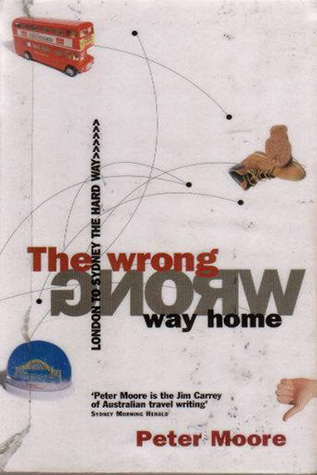The books I love and how they influenced me
Last week, my mate Alan Humm set me one of those Facebook challenges – post the covers of my favourite books, one a day for a week.
The idea is that you simply stick up a picture of the cover. No reviews. No explanation. Just the cover.
Like Alan, I found that impossible to do.
To me, the most interesting thing about such a list is why people love a particular album/book/film so much.
Sometimes, it’s simply because it brought them enjoyment. But most of the time, it’s something deeper than that. And that’s what I want to know.
So, last week, I listed my seven favourite books. And I broke the rules by explaining why I love them.
And I’ve decided to break the rules again, by taking the covers and my thoughts out of the ring-fenced world of Facebook and sharing them here as well.
(BTW, I’ve tried to use the covers the books had when I read them, so the quality of some of the images is a bit dodgy.)
Tess of the D’Urbervilles – Thomas Hardy

I had to study this book at school. I was a suggestible Aussie teenager and it has informed my world view ever since.
It’s why I find the romance of travel in the most desperate corners of the world.
It’s probably the reason I moved to England.
And it’s why I love listening to songs by wistful, melancholic Swedes.
That’s some impact for a book to have.
Vagabonding across Europe and North Africa – Ed Buryn

It’s not a conventional travel narrative. Nor is it a guide book. If I was pressed to describe it, I’d say it was a travel self help book.
It is written in a question/answer format, designed to prepare the reader to experience the world in a very particular way. (Readers of my first book, No Shitting In The Toilet, will certainly recognise the formula!)
Written in the early seventies, it is a book of its time. Ed is fond of asking ‘Can you dig it?’ at the end of every piece of sage advice. The Europe he describes is crowd-free and open. And I suspect a lot of drugs were taken on the road and when he was writing it.
But I challenge anyone to flick through ‘Vagabonding’, read Ed’s wise words, look at the hilariously dated photos and not wish they were sleeping on a park bench somewhere in Rome in 1972.
Which brings me rather nicely to my favourite travel quote ever, lifted from this very book. It gives me succour every time I think I may have missed some golden age of travel, when things were cheaper, less crowded and somehow more magical.
‘The Age of Discovery is never over when you are the dirscoverer.’
Can you dig it?
The World According to Garp – John Irving

This book is a real page-turner and I mean that as a compliment. The plot and the characters hurtle along at breakneck speed – seemingly recklessly – but are kept within a millimetre of chaos by Irving’s writing.
It’s funny book. And quite shocking and provocative at times, as well. Irving’s mother couldn’t finish it because she thought it was too bawdy.
Some critics have called it Dickensian. And with its huge cast of extraordinary, full-formed characters, I guess it is.
It’s just that they include transitioning footballers, feminist single mothers, religious fanatics and a writer struggling to define his masculinity. Quite prescient for a book written in the 70s.
The reason I love it, however, is that it makes me laugh out loud.
Something a John Irving book hasn’t done for a while now.
The Great Railway Bazaar – Paul Theroux

The Great Railway Bazaar had a huge impact on both my travels and my writing. It was the first travel book I’d read that was more about people and places rather than the author himself.
It was a deliberate decision. I got to interview Paul Theroux a couple of years ago for Wanderlust and one of his first tips for aspiring travel writers was ‘Don’t think you’re interesting.’
It’s other people who are interesting, he explained. And that’s what comes across in The Great Railway Bazaar.
It’s also very funny. Paul Theroux gets a lot of stick for being a grumpy git, but I think that’s missing the point. He doesn’t do slap stick. His humour is more subtle and sophisticated.
The Great Railway Bazaar also contains my favourite ever line about Australian travellers.
Theroux had been forced to share a second-class compartment with three Australians on the Van Golu Express across Turkey – ‘two boys and a pop-eyed girl’.
‘It was a situation I grew to recognise over the next three months,’ he wrote. ‘At my lowest point, when things were at their most desperate and uncomfortable, I always found myself in the company of Australians, who were like a reminder that I’d touched bottom.’
I got the chance to tell him how much I loved that line when I interviewed him. He threw his hands up in mock defeat and remonstrated that he was only joking.
I told him that for most of my adult life I’ve flattered myself by thinking that I’ve been continuing that tradition – marking the bottom for travellers just like those Aussies he’d met all those years ago.
High Fidelity – Nick Hornby

This book was given to me back in the mid-90s by my girlfriend.
As I read it, I thought ‘Wow, she really gets me!’
Two weeks later she dumped me.
I think she’d hoped the book would be a wake-up call about the road I was heading down.
Instead it gave me heart that there were other people out there who thought just like me.
Neither Here Nor There – Bill Bryson

I owe a huge debt to Bill Bryson. Before he came along and started selling books by the truckload, publishers were convinced travel didn’t sell.
And the only travel books they did put out were by square-jawed adventurers who took themselves and what they were doing very, very seriously.
There’s none of that in Neither Here Nor There. Bill Bryson laughs at himself just as much as he does at the predicaments and places he finds himself in as he backpacks across Europe with his mate Katz.
Some of Bill’s later travel books feel like they been written from a library rather than from the road. But not this one. It’s one of his earliest book but, I think, his best.
I remember feeling like I’d really discovered someone when it first came out. The only person to review it in Australia was the TV news presenter Steve Lieberman, of all people!
There’s at least one laugh-out-load moment each page. And I love the way he revels in the ridiculousness of travel rather than elevate it into some noble cause.
Like I said, I owe him a huge debt. I doubt I would have got published – by the same publisher as it turned out – if he hadn’t blazed the trail.
Unreliable Memoirs – Clive James

Clive was another author who heavily influenced me.
Like Clive, I was born in Kogarah and grew up in Sydney. And while he was a couple of generations older than me there was a lot I recognised in this hilarious account of growing up in Oz.
But the thing I loved about this book was that it showed you could be witty and erudite and still write with an authentically Australian voice.
Clive revelled in the country’s brash and exuberant humour. And leavened it with our intelligence and common sense as well.
He described it as ‘larrikin writing’.
This book is probably the best example of it.
The Wrong Way Home – Peter Moore

I’ve already broken the rules of this exercise by explaining why I love these books and how they influenced me.
So I’ve decided to break the rules again.
This time by posting an eighth book.
My favourite book of the all books I’ve written.
It’s a question I’ve been asked many times over the years and I’ve always demurred answering.
It’s not that I don’t have a favourite. I just realised that different books mean different things to different people.
But then Makino Takehiko, a Professor of Linguistics in Japan no less, posted on Facebook today that The Wrong Way Home was probably his favourite book ever and I decided to break ranks and admit it.
The Wrong Way Home is my favourite Peter Moore book too.
For one thing, the trip it describes was amazing. When I set off from London, I had nothing but a destination. Sydney.
I had no idea of the adventures that awaited.
I didn’t know I was going to get holed up in a bombed-out apartment in Bosnia. Or that I’d hang out with the mujahidin in Afghanistan. Or sleep in the Golden Temple in Amritsar, celebrate the Dali Lama’s birthday in Lhasa or smuggle myself across the Chinese border into Laos.
I didn’t know I’d meet Mirindi in Tirane, ‘Tache in Istanbul or a girl who looked like Uma Thurman on Bottle Beach in Thailand. Or that I’d be kidnapped by Iranians and taken to their homes where I was plied with food, coffee and incredible hospitality.
The book, too, changed my life. It wasn’t my first book. But it was the first of the kind of book I wanted to write.
A proper narrative with a beginning, a middle and end, full of adventure and characters and reflecting the kind of travel I love: bizarre, random and life-affirming.
On his Facebook post, Makino has posted images of the various covers The Wrong Way Home has had over the years. That was a trip down memory lane as well. He’d even found the cover for the American edition that never got to see the light of day because the publisher went bust.
It was the original Australian cover, the one I’ve posted here, that brought back the deepest memories though. I can even remember the smell of it when I opened the box of author’s copies, sent to me just before it was published.
I got a funny feeling in my gut that I was where I was meant to be and finally doing what I was meant to be doing.
I’m sure it’s a feeling all authors get.But it was a nice feeling, none-the-less.




